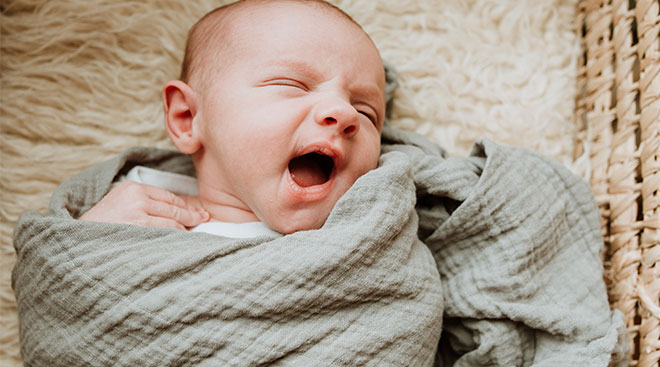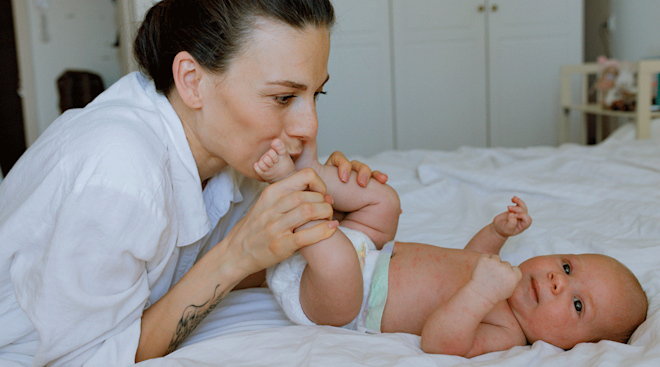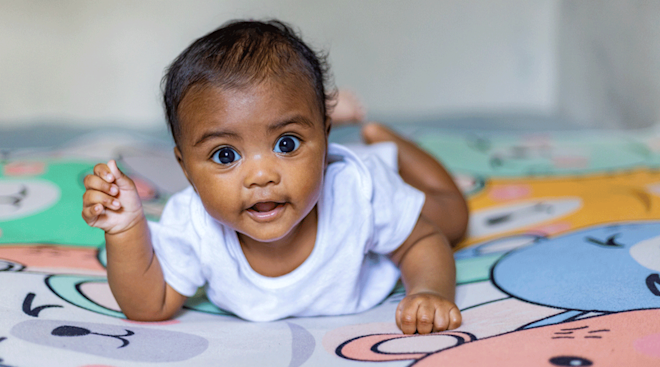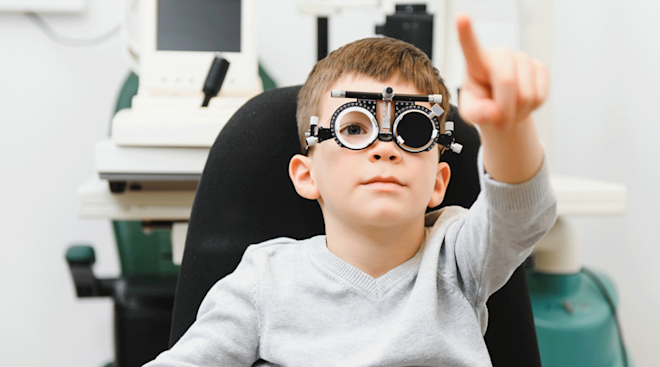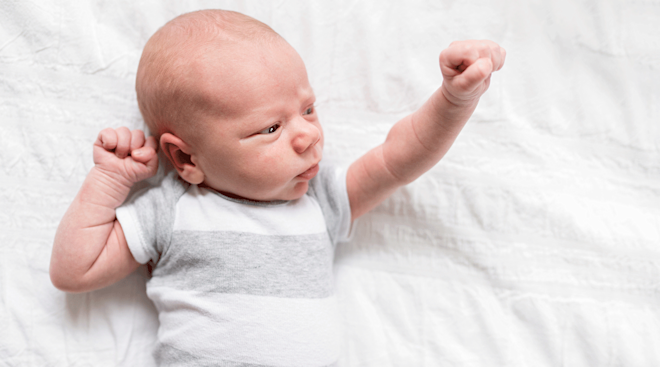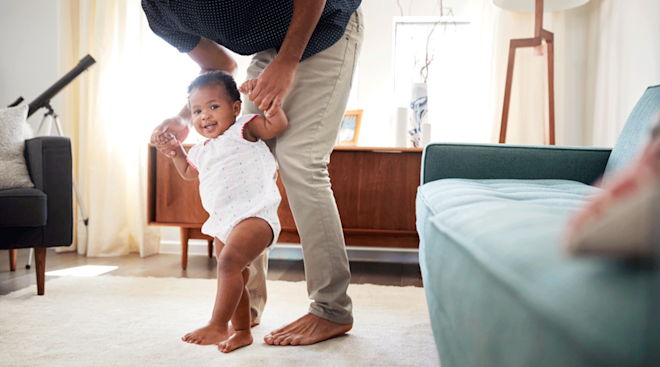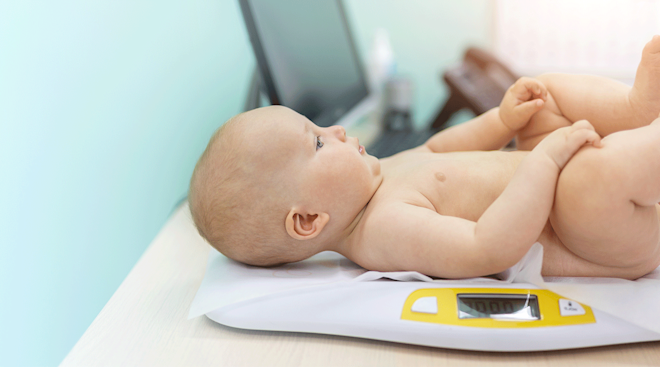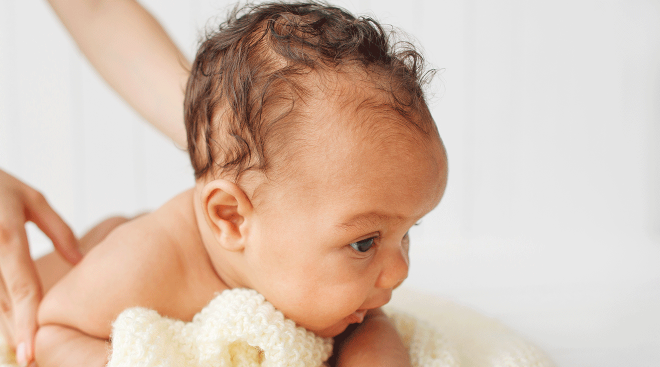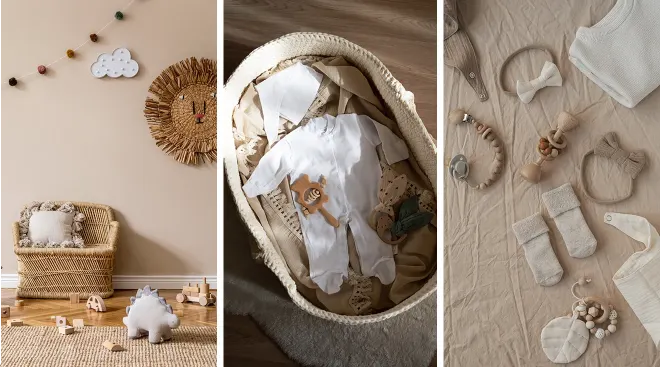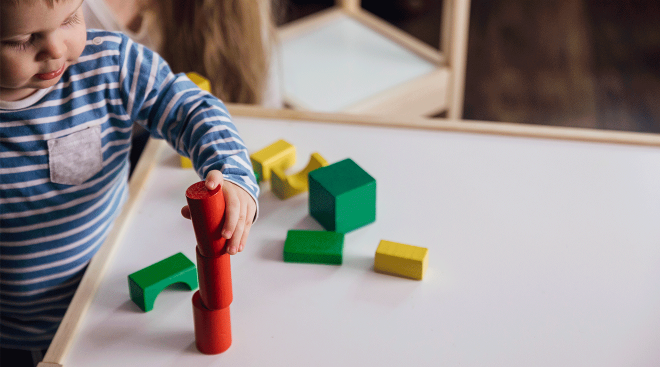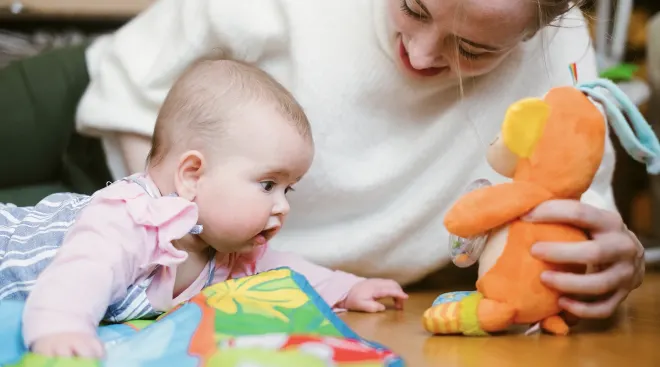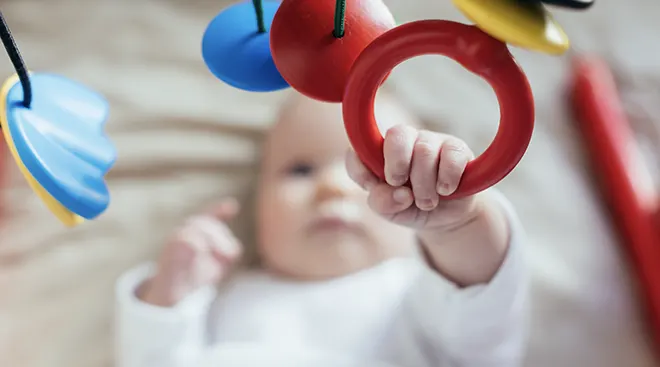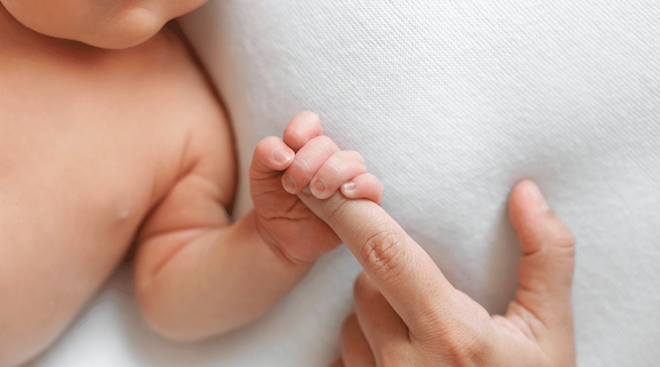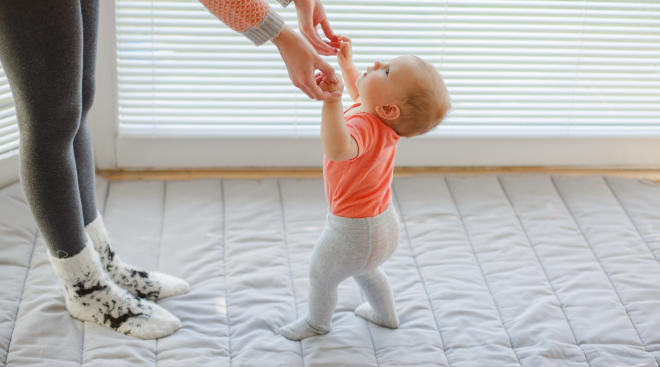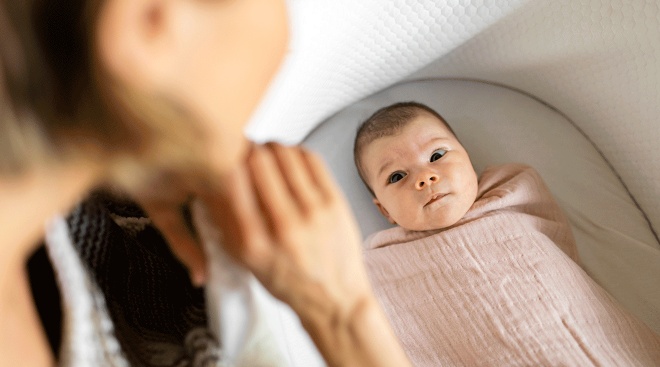The Moro Reflex: What Makes Babies Startle and How to Calm the Reflex
Did you know that many of your newborn’s movements are actually reflexes? These involuntary movements often resolve within a few weeks time as your little one’s nervous system becomes more mature. One of the reflexes that might be most apparent to you in baby’s first few days of life is the Moro reflex, or startle reflex. What is it, what triggers it and when does the Moro reflex disappear? Read on to learn more about this normal reaction.
The Moro reflex—also called the startle reflex—is triggered when baby is startled by a sudden movement, loud noise (sometimes even their own cry!) or quick change of position, particularly if their head falls backward. For example, you might spot it if you place baby down in their crib without enough head support. When the Moro reflex kicks in, baby will extend their arms, legs and neck and then immediately bring their arms and legs back to their body. They’ll also often cry.
It’s not known exactly what purpose the baby startle reflex serves, but some postulate that it’s how a baby responds to sensed danger.
You may notice baby’s pediatrician performing a Moro reflex test by gently pulling baby up by the arms and allowing their head to fall back slightly. Doctors check the Moro reflex to make sure baby’s nervous system is okay and that they’re moving both arms equally, to rule out any arm or nerve damage that could have been sustained during birth.
Abnormal Moro reflex
It’s possible for babies to exhibit an abnormal startle reflex.
An exaggerated Moro reflex is a more pronounced startle reflex where baby’s arms would extend out in a more exaggerated manner. It’s not uncommon to see an exaggerated Moro reflex, and there’s no need to treat it differently.
An asymmetrical Moro reflex—for example, if baby extends one arm while the other arm stays by their side—may be a sign of nerve damage or a fracture of baby’s clavicle bone.
While rare, if baby is born without a Moro reflex, it may be a sign of a more serious condition, such as a birth injury, infection or neurological or muscle issue.
While the Moro reflex is completely normal, there are some sudden movements that need immediate attention, such as a seizure. There are different types of seizures and can sometimes be hard to recognize. In certain seizures, called infantile spasms, you may see baby’s body spasm or stiffen up, with their back arching as their arms, legs and head extend or curl forward. Baby might also appear startled. These seizures may last only a few seconds at a time; after they begin, you may notice baby acting differently and possibly losing developmental milestones they had already reached.
If you think baby is having unusual movements, record the movements so you can show it to their doctor. If baby has a leg or arm twitch, it can be helpful to touch the body part to make the movement stop. If the leg or arm stops twitching right away, the movement likely is not a seizure, but still, discuss it with the pediatrician right away. If you are at all concerned that your child is having a seizure, this warrants an immediate call to your pediatrician and a trip to the emergency room for further evaluation.
The Moro reflex is completely harmless, but it can be set off at inopportune times—namely, while they’re sleeping, which then startles your newborn awake. The best way to calm the reflex is to swaddle baby, which helps reduce sudden movements that trigger the baby startle reflex. Also helpful: Lay baby’s head down gently when placing them to sleep to avoid prompting the Moro reflex.
The Moro reflex develops while baby is still in utero, as early as week 25 of pregnancy. It’s present at birth, peaks around the first month of life and then begins to disappear around 12 weeks. The startle reflex should be completely gone by 5 to 7 months of age.
Retained Moro reflex
In rare instances, the Moro reflex fails to disappear. A retained Moro reflex that lasts beyond 7 months may be a concern of motor or neurological development and should be brought to your pediatrician’s attention.
About the expert:
Dina DiMaggio, MD, is a pediatrician at Pediatric Associates of NYC and at NYU Langone Medical Center, and serves as a spokesperson for the American Academy of Pediatrics. She has received numerous research awards, along with Patient’s Choice award, compassionate doctor recognition and was featured in the New York Times Magazine as a Super Doctors and New York Rising Star. She and Anthony Porto are coauthors of the book The Pediatrician’s Guide to Feeding Babies and Toddlers. Follow them on Instagram at @pediatriciansguide.
Please note: The Bump and the materials and information it contains are not intended to, and do not constitute, medical or other health advice or diagnosis and should not be used as such. You should always consult with a qualified physician or health professional about your specific circumstances.
Plus, more from The Bump:
Navigate forward to interact with the calendar and select a date. Press the question mark key to get the keyboard shortcuts for changing dates.
































